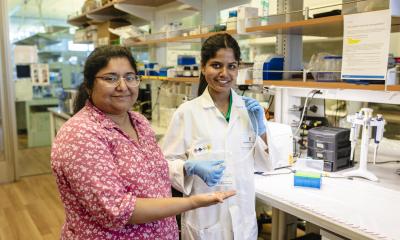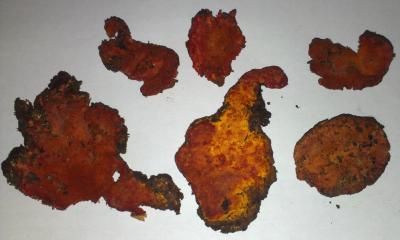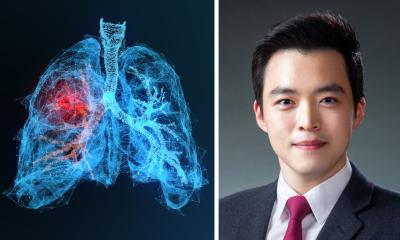Ground Zero
by Karen Dente
Workers suffer long-term health effects five years after World Trade Center terrorist attacks.
New York, USA – A study released by Mount Sinai Hospital in New York and published in the journal Environmental Health Perspectives of the US National Institutes of Environmental Health Sciences confirms what earlier research has also indicated – a high number of the first responders and rescue workers are suffering from long-term health problems due to the toxic nature of the dust released by the collapse of the Twin Towers on September 11th, 2001.
The study of almost 10,000 workers showed that almost 70 percent reported new or exacerbated respiratory symptoms, such as persistent cough or shortness of breath, that occurred either during the recovery work at Ground Zero, or thereafter. Firemen were the most hardly hit population, since they arrived at the scene the earliest. More than half of all responders in this study reported symptoms up to two and a half years later.
‘The fact that symptoms have been persistent for as long as they have is cause for concern,’ said Philip J. Landrigan, Professor of Pediatrics and Chairman of the Department of Community and Preventive Medicine in the Mount Sinai School of Medicine in New York. ‘When we take folks to pulmonary function tests we are seeing reductions in forced vital capacity, symptoms of restrictive lung disease,’ he said. According to the conducted study, there is evidence of experimental abnormality in 28% of people who were non-smokers, and the percentage you would expect to see in the national population based on surveys the Center for Disease Control (CDC) conducted were 13 percent – that is a doubling.
It is estimated that about 40,000 people took part in the cleaning of the debris at the World Trade Center site. This included volunteers, firemen, policemen, diverse construction workers and medical examiners. In the first 24 hours after the attack, 240 New York firemen sought emergency medical care, and 50 were treated for acute respiratory symptoms resulting from inhalation of smoke and toxic dust – described by some firefighters in the immediate aftermath of the attack as being ‘thick as soup’. A ‘World Trade Center Cough’ was seen in 332 firefighters in a study conducted six months after the attack in which a total of 10,116 firemen were evaluated.
The workers that took part in the study were for the most part not sick before the attack. ‘We are talking about people who were previously healthy and actually many of them were to be described as being super fit – these were firefighters and construction workers, these were big, strong people,’ said Dr. Landrigan.
Other than respiratory problems, the toxins in the alkaline dust led to other symptoms such as chronic sinusitis, gastrointestinal complaints including heartburn, and headaches.
The respiratory disease appears to be more than just the result of a slight irritation to the airway membranes. The dust was very caustic since the principal component was pulverised concrete, which is made up of calcium hydroxide and sodium hydroxide with water mixed together and hardened. ‘When fine particles landed on people’s respiratory membranes it burned them,’ explained Landrigan. ‘Initially it was an inflammation and subsequently as the inflammation receded it was replaced by scar tissue. I think that’s why we are seeing the restrictive disease,’ he said.
The biggest worry is the emergence of cancer related to asbestos exposure in the future, which typically has a latency of up to 30 years prior to diagnosis.
The enormous impact of the planes carrying 90,000 liters of jet fuel with the buildings constructed during the 1970s resulted in the generation of new complex materials. Tons of silicates, sulfates and metals were thrust into the air, along with microscopic shards of glass, lead, highly toxic fumes of dioxins, polycyclic hydrocarbons and pulverised asbestos – the North Tower contained asbestos up to the 40th floor for fire insulation before it was banned for use in construction due to its cancer-inducing nature.
Asbestos has been declared a proven human carcinogen by the Environmental Protection Agency (EPA) and by the International Agency for Research on Cancer of the World Health Organisation.
At a testimony before the United States Senate Committee on the Judiciary in April 2005, Dr Landrigan said, ‘non-smoking asbestos workers have five times the background risk of lung cancer.’ Asbestos has been demonstrated to lead to cancer of the lung, malignant mesothelioma of the pleura and peritoneum, cancer of the larynx, as well as other gastrointestinal cancers. It can also cause asbestosis, which is a progressive fibrotic disease of the lungs.
Current epidemiological studies provide evidence that exposures to asbestos for even one month under heavy exposure conditions can double the risk of lung cancer and increase the risk of death due to asbestos.
Asbestos was also found in the dust that settled in the apartments and other buildings around the World Trade Center. Besides the Mount Sinai Hospital and its five other academic teaching hospitals that form a Consortium of Clinics in the greater New York area and in New Jersey, and that are currently entitled to perform the Medical Screening Programme to screen and evaluate responders who worked at the site and follow them for medical conditions, the Bellevue Hospital at New York Medical University has its own small programme that is also evaluating residents living a few miles from the site.
Dr Joan Reibman, director of the asthma clinic at Bellevue, and colleagues conducted a study 16 months after the terror attack in conjunction with the New York Department of Health and Mental Hygiene, funded by a grant from the US Center for Disease Control, to look at the increased prevalence of respiratory illness among residents near Ground Zero. Of the 2,812 people residents studied, 60 percent showed symptoms such as cough, wheezing, or shortness of breath, compared to only 20 percent in the control group. The symptoms persisted beyond the initial exposure. A cough was seen four times as often as in the control group. The major limitation of the study due to the unexpected nature of the catastrophe was its reliance on self-reported information of the enrolled subjects. The programme at Bellevue is still rather humble, but is going to be augmented soon. Mayor Bloomberg of New York has recently pledged funding for the programme from government agencies so that the many affected New York residents, including those living in Brooklyn, who have not been captured by any of the prevailing monitoring and screening programmes can be folded into a health programme and watched over time.
The number of responders alone who have not yet been screened is thought to be about 10,000, since there was no official list of people who helped. ‘Our goal is to get everyone who helped at Ground Zero monitored and treated,’ said Dr John Howard, director of the National Institute of Environmental Health and Safety and acting federal coordinator for 9-11 related health programmes since February 2006, who sees himself as ‘the eyes and ears of the people at Ground Zero’.
14.11.2006










